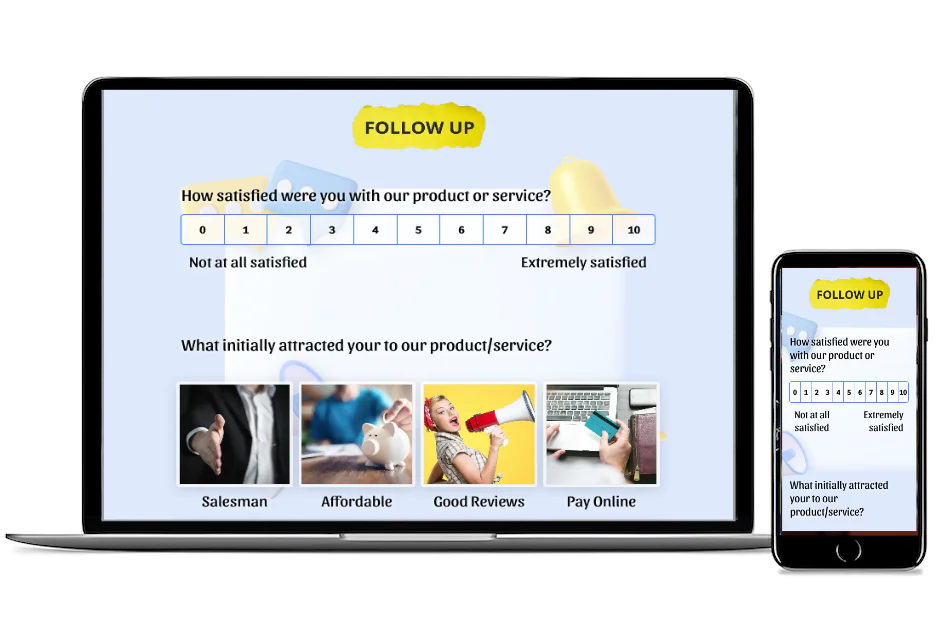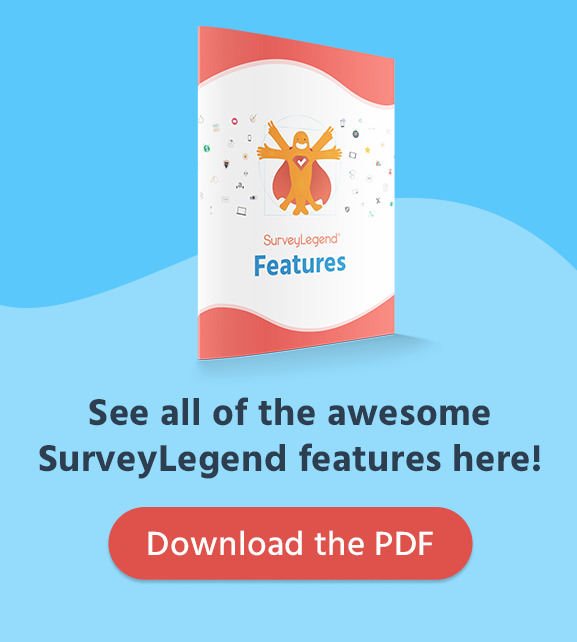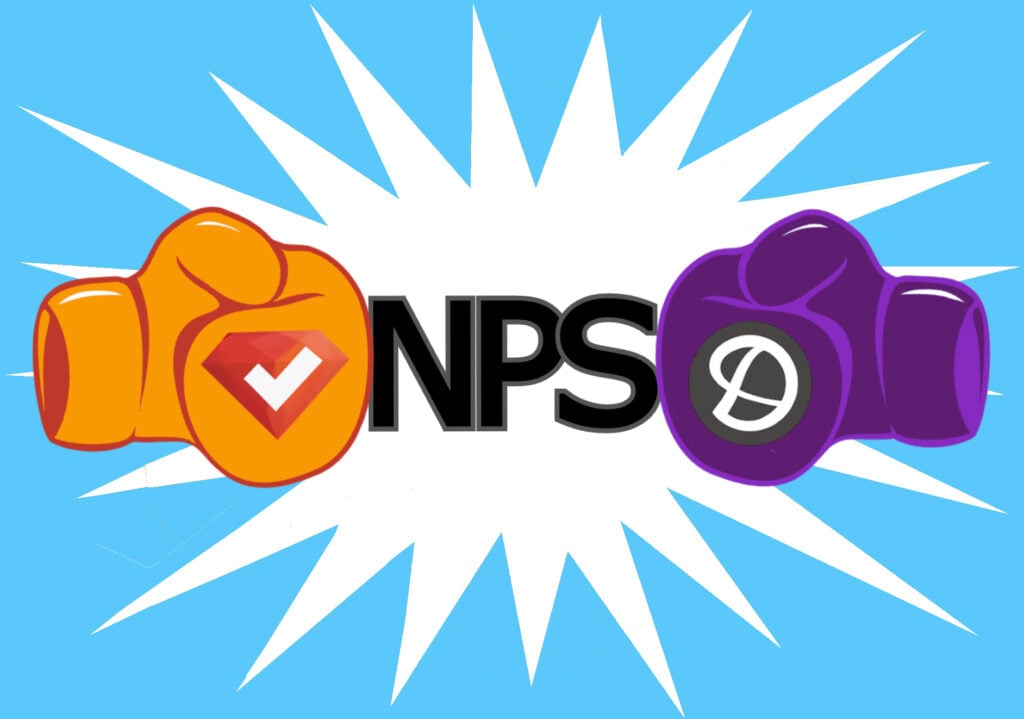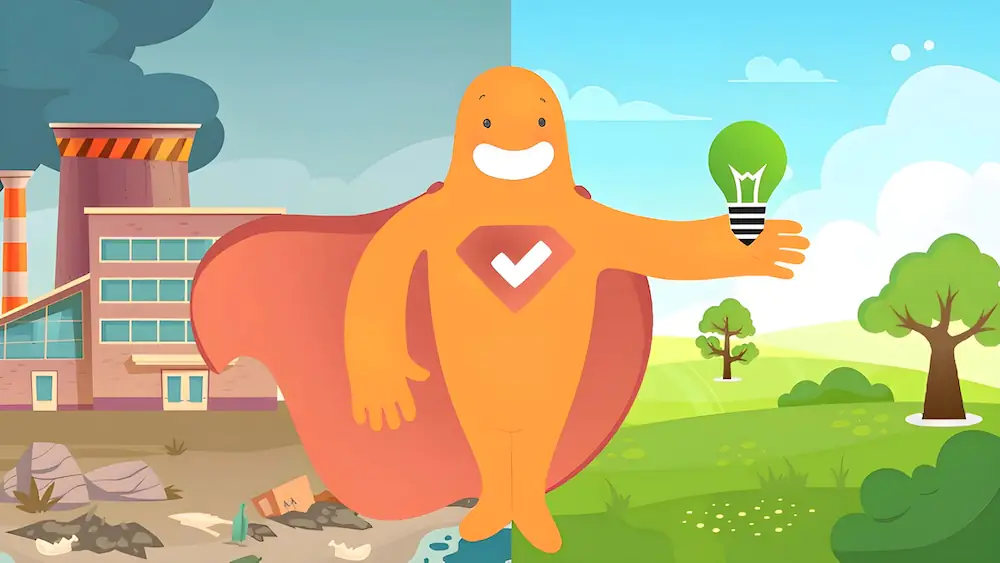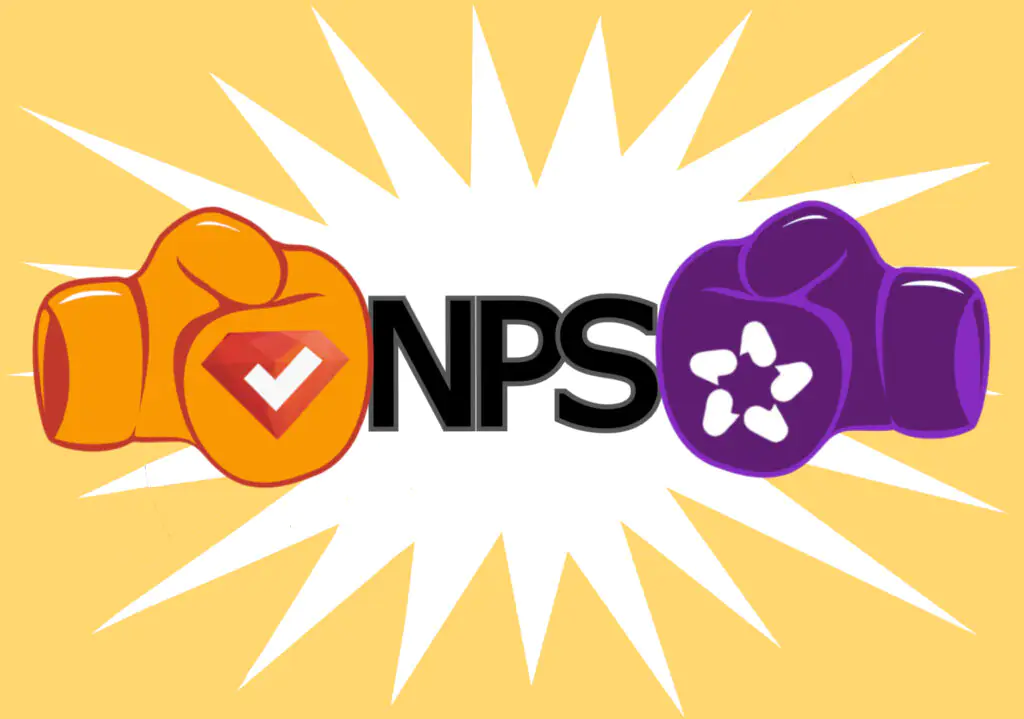“The fortune is in the follow-up.”
– Jim Rohn
Rohn, an American entrepreneur, author, and motivational speaker who passed in 2009, understood the importance of follow-up. He would often talk about it during his seminars on setting goals and achieving success in life and business during the 1970s and 80s. Despite this, many studies – which we’ll highlight here – show that follow-up is often ignored or forgotten. So, let’s take another look at the importance of follow-up and how surveys can help with the process.
Create Your FREE Follow-Up Survey Now!
Follow-Up Definition
Following up, or follow-through, is the act of getting back to people, tasks, or commitments following an interaction or a promise. Whether its business personal, timely follow-up demonstrates reliability, professionalism, and a genuine interest in the outcome. Follow-up allows for clarification of details and resolution of issues. In sales, effective follow-up can significantly increase conversion rates and customer satisfaction. Ultimately, consistent follow-up not only builds trust and strengthens relationships but also ensures that goals are achieved and opportunities are capitalized upon.
Despite the benefits of following up, some people and businesses fail to consistently do so. Here are some surprising follow-up statistics, or should we say lack of follow-up statistics.
- 71% of qualified leads are never followed up with (Forbes)
- 80% of sales deals take five follow-ups yet 44% of reps stop after one (Yesware)
- 53% of customers switch companies due to a lack of follow-up (Help Scout)
- 60% of job seekers don’t follow-up with employers after an interview although 68% of hiring managers appreciate a follow-up (Career Builder)
- 70% of job seeker want feedback after an interview, but 75% of businesses ghost unwanted candidates following an interview (Tim Sackett Project)
- 57% of employees let communications about project updates slip through the cracks without proper follow-up (Hubspot)
What Is a Follow-up Survey?
A follow-up survey is a questionnaire administered after an initial interaction or event to gather feedback, assess satisfaction, or track progress. These surveys are often used in customer service, sales, event planning, employee feedback, and market research. The purpose of these surveys is to gather follow-up data, and then to measure the effectiveness of actions taken, identify areas for improvement, and strengthen relationships with participants or customers.
Follow-up surveys can be conducted via various channels, including phone calls, mail-in surveys, or in-person interviews, but today most follow-up surveys are conducted online and often through email. In fact, a HubSpot survey reveals that 80% of professionals prefer to use email for business communication, including follow-up.
10 Reasons Use Follow-Up Survey
Here is a quick rundown of the various ways in which follow-up surveys benefit sender and recipient in any transaction.
Following up…
- Provides closure, ensuring that tasks or commitments are resolved.
- Builds trust, because it demonstrates reliability and commitment.
- Offer clarification, eliminating any possible misunderstandings or uncertainties.
- Provides feedback, which can be used to evaluate and improve future interactions or processes.
- Maintains momentum, ensuring ongoing initiatives remain in action.
- Improves customer experiences, showing them that their satisfaction is a priority, leading to increased loyalty and repeat business.
- Resolves problems, addressing issues or concerns before they escalate or damage reputations.
- Nurtures relationships, which can lead to future opportunities.
- Demonstrates professionalism, enhancing one’s reputation in both personal and professional spheres.
- Sets next steps, whether it’s setting up another meeting, finalizing a deal, and so on.
Follow-Up Survey Questions
The questions to ask on a follow-up survey will depend on the context of the interaction or event being evaluated. However, here are some general categories and examples of questions that can be included in a follow-up survey using a variety of types of survey questions (multiple choice, rating scale, sliders, open-ended, etc):
Overall Satisfaction
- How satisfied were you with [company/product/event]?
- On a scale of 1 to 10, how likely are you to recommend [company/product/event] to others?
- How likely are you to purchase/attend an event from us again in the future?
Specific Experience
- How would you rate the quality of [specific feature/service]?
- Were your expectations met regarding [specific aspect]?
- Would you say this product/event was [better/worse/about the same] as others you’ve tried/attended?
Feedback on Process
- How easy was it to [complete a task, make a purchase, attend the event]?
- Were there any obstacles or challenges you encountered during the process?
- On a scale of 1-10, how easily were you able to navigate our website?
Suggestions for Improvement
- What improvements would you suggest for [company/product/event]?
- Is there anything we could do differently to better meet your needs?
- Did you communicate any concerns about the [product/service/event] to someone previously?
Customer Service
- How would you rate the responsiveness and helpfulness of our customer service team?
- Did our team resolve any issues or concerns you had effectively?
- Is there anything else you would like to share about your experience?
These questions can be adapted and customized based on the specific goals of the follow-up survey and the audience being targeted. Remember to strike a balance between gathering valuable feedback and keeping the survey concise and easy to complete.
Create Your FREE Follow-Up Survey Now!
7 Follow-Up Survey Best Practices
Whether customers like follow-up surveys can vary depending on several factors, including the timing, relevance, and perceived value of the survey. Here are seven considerations:
1. Personalization
You may choose to use a person’s name in your subject line or email if you know it, although this is becoming more and more common. Another tactic is to mention the product, service, event, or topic, so that the recipient has a reference point. For example, you may title your subject line as follows:
- Quick survey about your [New iPhone X].
- How did you enjoy the [Manhattan Tech Conference]?
- Following up regarding your [BMW 525i] service repair.
2. Timing
Customers are more likely to appreciate follow-up surveys if they are conducted shortly after their interaction with a product or service (plus, the interaction will be fresh in their mind so you’ll receive better feedback). Sending a survey too long after the experience may result in reduced response rates or less accurate feedback.
3. Relevance
Customers are more likely to engage with surveys that are relevant to their experience. For example, a follow-up survey about a recent purchase or customer service interaction is more likely to be welcomed than a generic survey unrelated to their recent activities.
4. Perceived Value
Customers are more likely to participate in surveys if they believe their feedback will be used to improve products or services. If customers see tangible changes or improvements resulting from previous surveys, they may be more inclined to participate in future surveys. This is why it is important to act upon feedback, and not just request it and disregard it.
5. Ease of Participation
Customers appreciate surveys that are easy to complete and don’t require a significant time investment. This is one reason online surveys are so popular; people can take the survey when it is convenient for them, versus a phone survey which may interrupt them when they are busy or an in-person interview which may require travel (and incentives).
6. Length of Survey
Lengthy or overly complex surveys may deter participation. You might even consider microsurveys, which are gaining in popularity, or social media surveys, which lend themselves to brevity.
7. Incentives
Offering incentives such as discounts, coupons, or entry into a prize draw can increase participation in follow-up surveys. Be sure to read our blog on the 10 Pros & Cons of Survey Incentives to understand when to use them, when to avoid them, what to offer, and how to manage them.
Follow-Up Survey Best Example
Below is a simple example of a follow-up Survey created using SurveyLegend. It uses three types of questions to keep respondents engaged (scale, image selection, and thumbs), using “Follow Up” branding at the top, and employs an appropriate background image for eye appeal.

Conclusion
Follow through is an important part of life, and in business, it can make or break you. Whether you’re selling a product or service, putting on an event, or seeking feedback from employees, students, or any other group, it’s important to always follow-up. With SurveyLegend, you can create your follow-up surveys for free using our awesome online survey tool. Our surveys are user-friendly, visually engaging, and highly secure. We also provide a wide variety of types of survey questions so you can make surveys that people will enjoy taking! Start today!
Have you sent follow-up surveys in the past? Do you appreciate receiving follow-up surveys? Why or why not? Let us know what you think in the comments!
Create Your FREE Follow-Up Survey Now!
Frequently Asked Questions
Following up is crucial in building and maintaining relationships, as it shows that you value the connection and are committed to staying engaged. It also helps to ensure that tasks or commitments are completed in a timely manner and avoid any miscommunication or misunderstandings. A lack of follow through can give the impression that someone doesn’t care about an interaction.
Follow-up surveys can be useful in a variety of situations; basically, anytime you need feedback from customers or users to improve your products, services, or processes. For example, after someone has completed the purchase or a product or service, after someone has attended an event, after a training session, or after launching a new product or feature.
Some people may appreciate follow-up surveys as it gives them an opportunity to provide feedback and suggest improvements. Others may find them tedious and intrusive, especially if they are frequent or if they don’t see any tangible changes implemented as a result of their feedback. Overall, attitudes towards follow-up surveys may vary depending on individual preferences and experiences.

